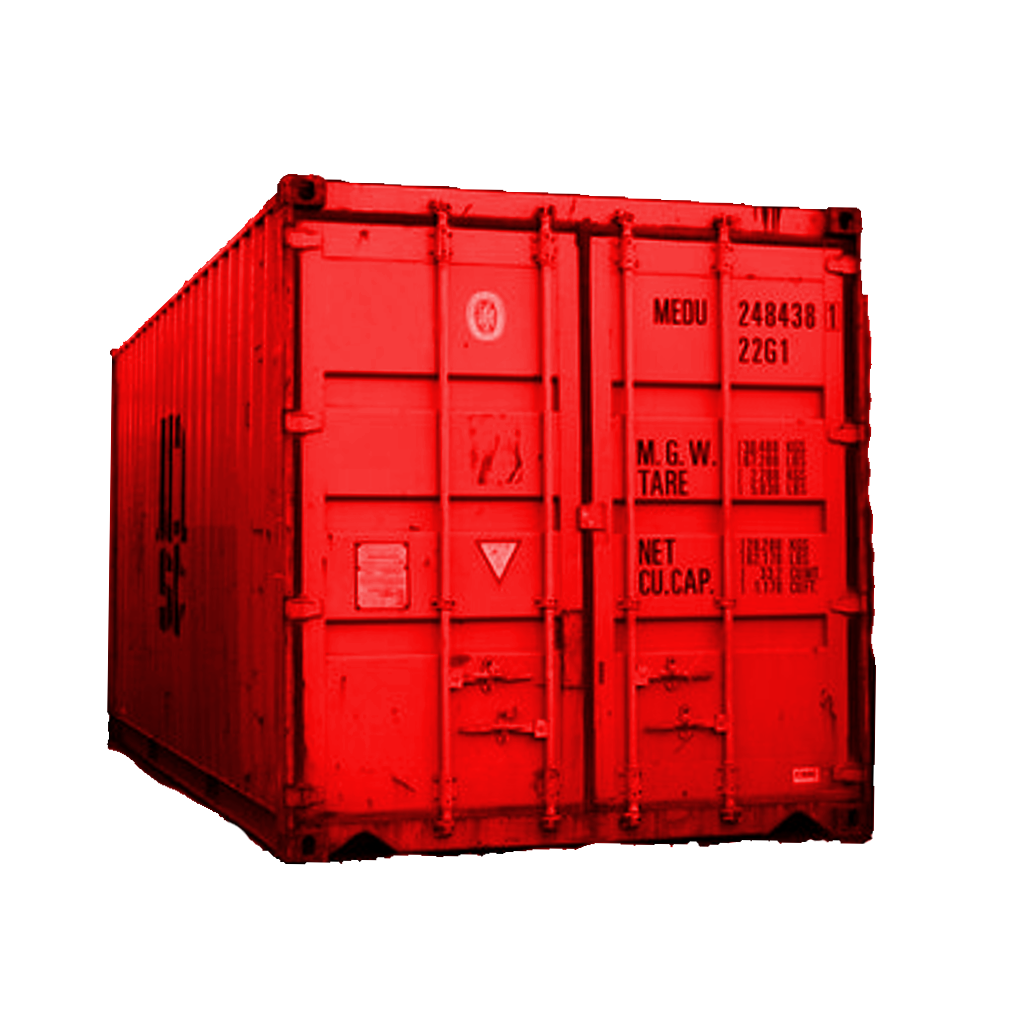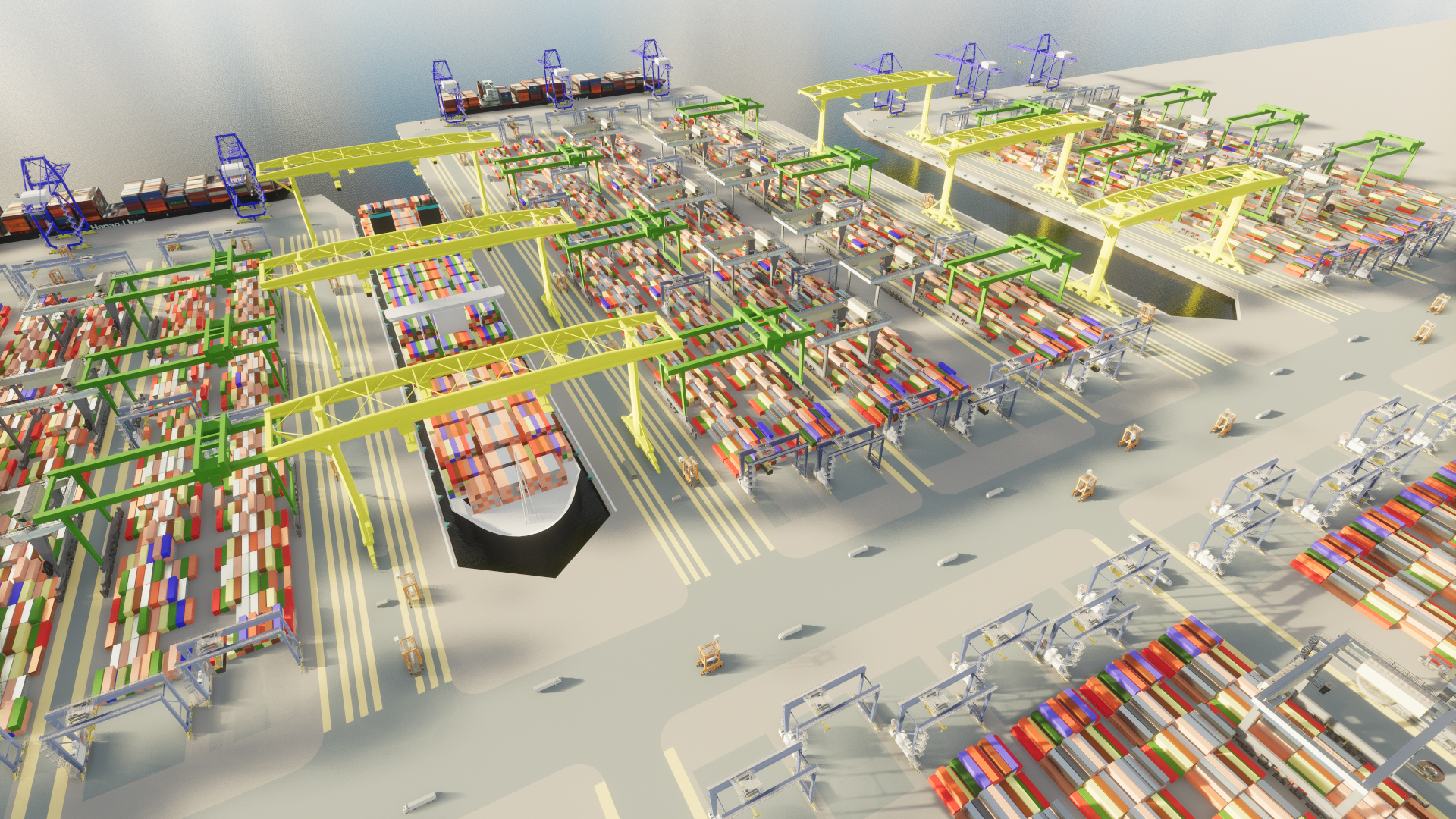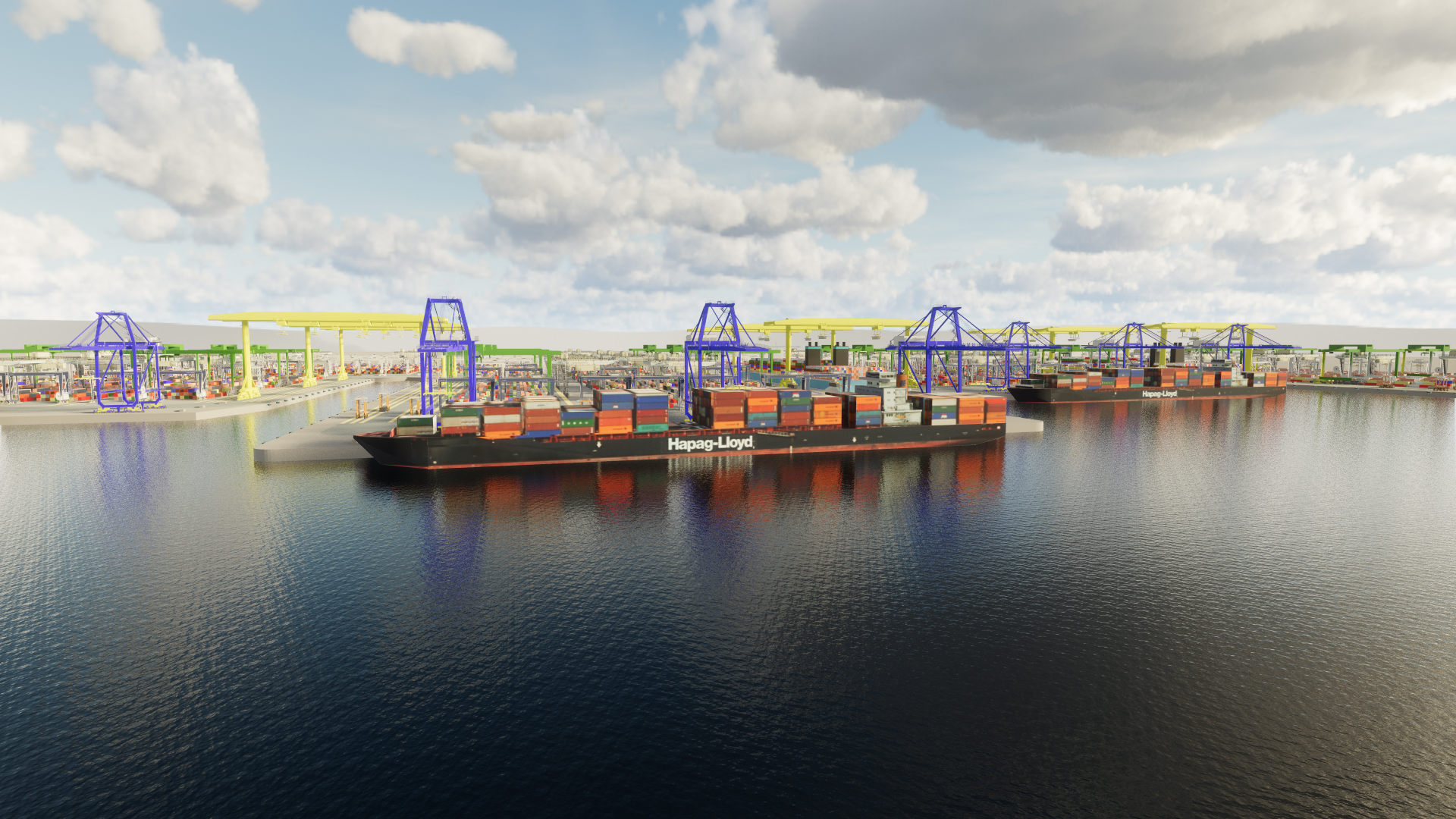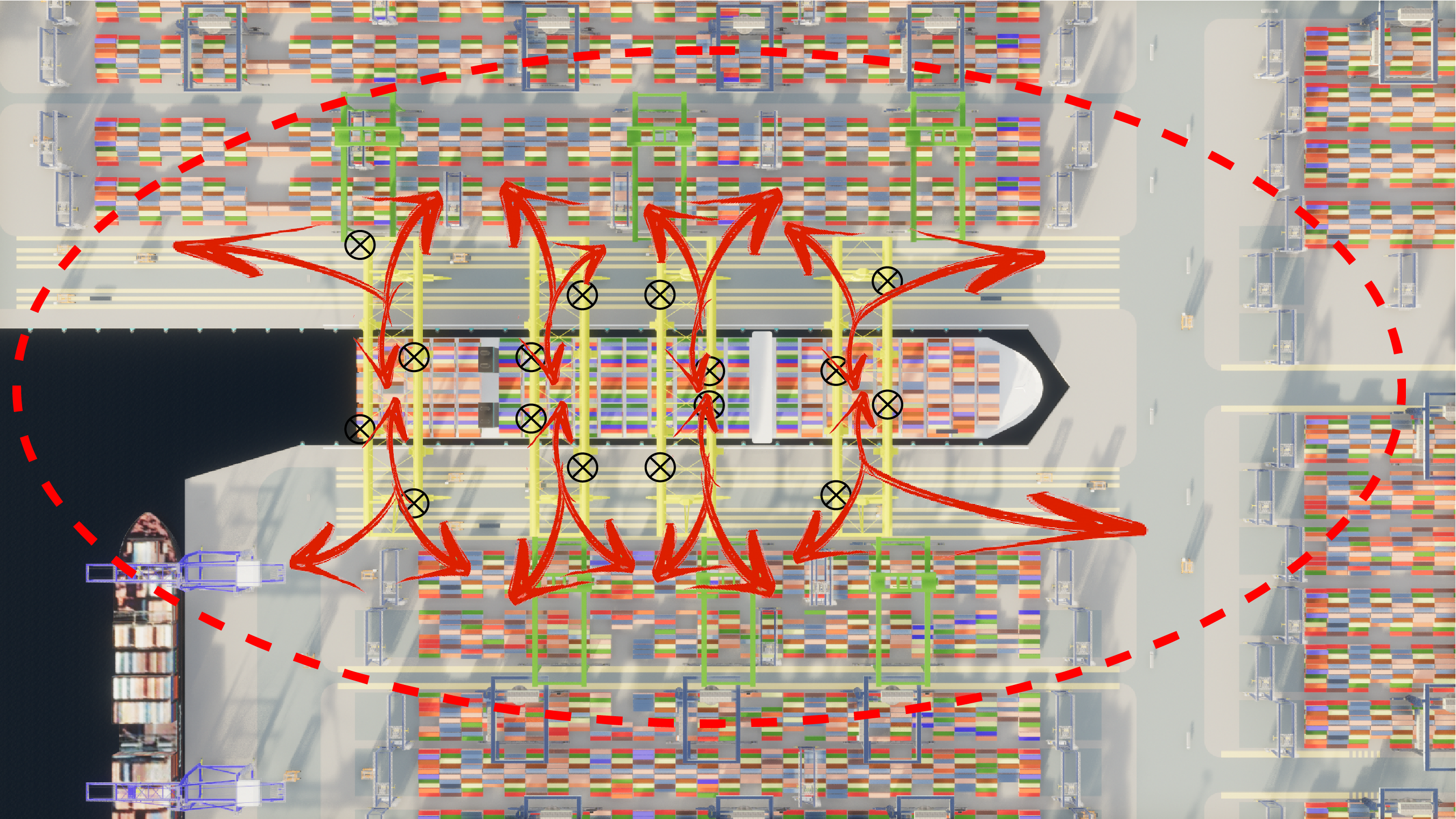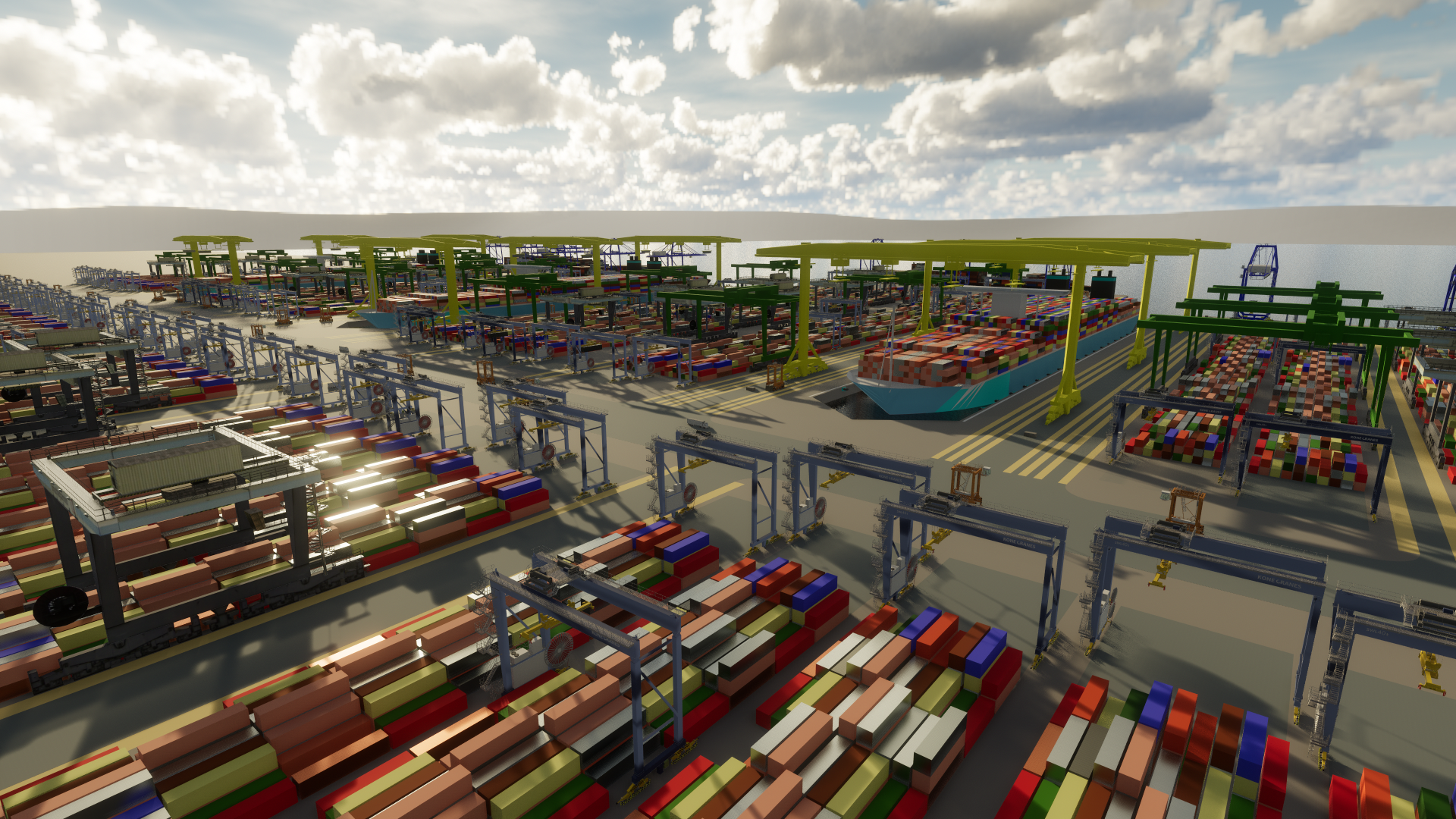Double the number of lifting hooks can be placed over the container ship when compared to a conventional system. Each COFASTRANS portal crane has 4 lifting hooks, running on 2 beams and operating simultaneously. Conventional Ship-to-Shore cranes contain just one hook, and the development of tandem-lift systems is equally applicable to portal cranes. It is expected that 3 or 4 COFASTRANS cranes will be deployed on a given berth, compared with a maximum of 8 conventional cranes. As such, COFASTRANS can place 16 hooks above the vessel, while the conventional approach is limited to 8. This enables a significantly higher loading rate, while placing less strain on the machinery.
COFASTRANS can deliver the step change in cargo handling performance necessary to achieve efficient shipment of containers. COFASTRANS accomplishes this by positioning the ship, which is the biggest and most valuable element in the overall terminal delivery system, at the heart of the central working area. This is surrounded by port operations with direct access to the shoreside container stacks on both sides of the ship, thus giving direct access to the quayside with twice the area available for landing containers. This compares with the conventional arrangement where vessels are at the periphery and restricted to access over only one side. This arrangement provides the following benefits.
Cargo is transferred over both sides of the ship, rather than just one. This significantly reduces quayside congestion, as the volumes of containers on each quayside are halved, allowing greater handling efficiency. The lifting hooks generally take containers from the near side of the vessel, travelling much shorter distances. This saves time, and enables lower hook speeds, reducing the maintenance requirement.
